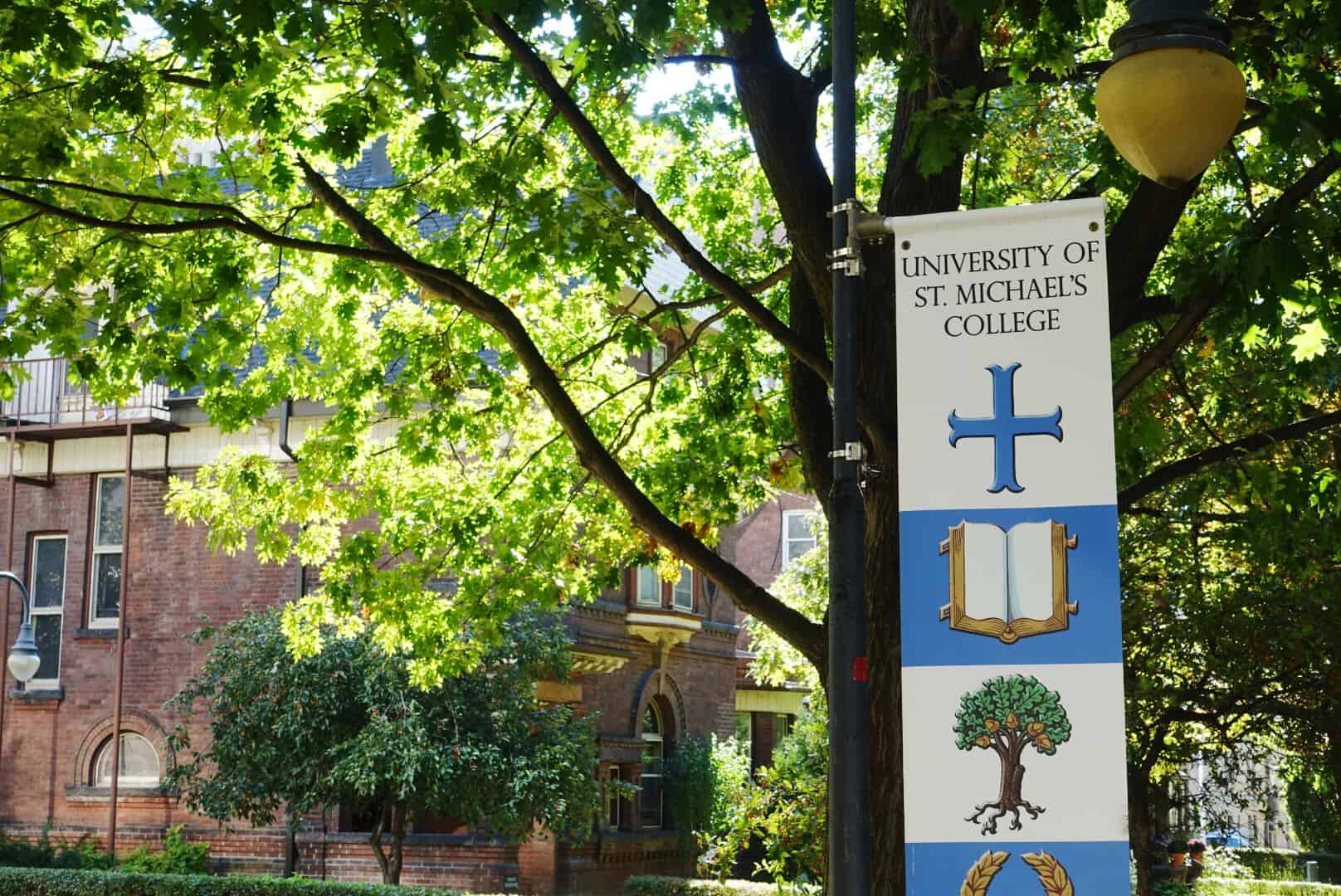On September 19, 2016, the University of St. Michael’s College (USMC) President David Mulroney announced his intention to present a report to the USMC’s Collegium — its highest governing body — outlining a plan for the renewal of St. Michael’s College (SMC). The report was written two days later and posted to the SMC website.
Mulroney’s announcement, delivered in a piece that was inauspiciously titled “Two Solitudes no More,” painted a severely divided picture of SMC in which student life at the campus diverges from the president’s expectations of a “Catholic intellectual community.” The solution, Mulroney wrote, is to break down the silos and develop a new policy governing the relationship between the university and its main student groups.
While some aspects of the current SMC situation seem to call for a policy response, Mulroney will have to be cautious of how those policies are written so that they do not, inadvertently or otherwise, have a deleterious effect on the college’s vibrant student life.
Some of what Mulroney proposes is promising. In an interview with The Varsity, Mulroney described his intention to formalize financial accountability for levy-collecting groups at the SMC. This may provide the St. Michael’s College Student Union (SMCSU) and other groups with the necessary framework to avoid repeating past financial woes.
Accountability policies already exist for most levy-collecting groups at U of T. As this newspaper has argued before, groups that operate in an open, accessible, and democratic manner should welcome this oversight, as long as the policies in question do not impede on their autonomy. Mulroney should consider this when drafting the policy.
As president of USMC, it is also true that Mulroney has a responsibility to set out priorities for the university according to his understanding of its mission. He has clearly outlined his intention to realign life at SMC with his view of what makes a good “Catholic intellectual community.”
Some of the ways Mulroney plans to do this seem to offer positive opportunities with few drawbacks. He proposes the advancement of a social innovation space called ‘Angel Lab,’ which seems to fuse a commitment to intellectual development with spiritual aims. In his report, he also refers to renewal and recruitment within the Faculty of Theology, a scholastic endeavour that is important to the college.
Yet, while he attempts to revive the college’s traditions, Mulroney risks losing touch with how the college has evolved past its legacy of being a strictly Catholic institution, particularly with respect to student life.
If, as Mulroney describes, “SMCSU’s program of activities had almost nothing to do with the life of a Catholic intellectual community,” perhaps that is because the interests of the student body are much broader than that description allows.
It is reasonable to assume that the presence of a Catholic community at their college is a low priority — or not a priority at all — for many St. Mike’s students. Indeed, not every St. Mike’s student is a practicing Catholic, and it is the job of the SMCSU to provide services and advocate for the student body that it represents. It is fitting, therefore, that while some events sponsored by SMCSU are connected to Angel Lab and other seemingly traditional aspects of life at SMC, others have no connection to Catholic intellectualism whatsoever; social gatherings that could unite the SMC community still have a role to play in the union’s offerings.
Inasmuch as SMC may be considered a ‘party college’ — a reputation that Mulroney denounces — there are many students who not only enjoy the social fabric of SMC but also take pride in it.
In addition to his comments on the unsuitability of SMCSU’s events, some of Mulroney’s comments on the union were disparaging. He said that he witnessed the union’s leadership promote an elitist culture and “adopt — and enforce — a lifestyle and practices that would be more suitable at a fraternity house.” He also had a pool table removed from the SMCSU-run student hub Brennan Hall, after having received reports that the spot attracted unwelcome behaviour.
Despite the president’s concerns with the operations of the SMCSU and the behaviours displayed in Brennan Hall, it is essential that he recognizes that the leaders of SMCSU should be held accountable primarily by the students that elect them, not by restrictive policies placed on the union by the university’s president or collegium.
Promoting the kind of intellectual community that Mulroney envisions should not mean expunging the existing culture at the college. In promoting his vision of Catholic intellectualism, he must be careful not to create an exclusionary reputation for the college — eroding the array of opinions and backgrounds that are currently present at SMC would be a loss for everyone involved; students, faculty, and alumni.
Moreover, it would be infantilizing and inappropriate for Mulroney to attempt to police the behaviour of students on the campus. For example, removing the pool table from Brennan Hall was likely more punitive than it was productive. While it may be appropriate for Mulroney in his capacity as USMC president to advise SMCSU on how to create a welcoming environment at the college, he should not use his position to discipline students for the way that they socialize — taking away their table was a particularly crude way of doing so.
It is clear that Mulroney is concerned about the divisions that exist at SMC. While his proposal to correct these divisions through the formation of a new policy is within his purview as president, and even though they may be promising in some regards, he must continue to assure the autonomy of student groups and respect the fact that the culture of student life at the college has evolved far beyond tradition.


